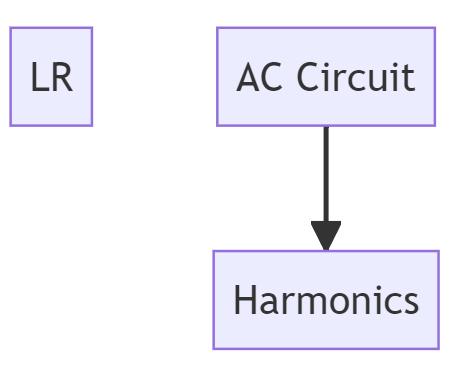Understanding Harmonics in AC Circuits
Introduction
At daenotes.com, we are dedicated to providing you with the most accurate and comprehensive information on various topics related to electrical circuits. In this article, we delve into the concept of harmonics in AC circuits. Understanding harmonics is crucial for engineers, technicians, and anyone working with alternating current systems.
What are Harmonics?
Harmonics are additional frequencies that exist in an AC circuit apart from the fundamental frequency. The fundamental frequency is the primary oscillation of the waveform, typically 50 or 60 Hz. In an ideal AC system, the voltage and current waveforms would be perfectly sinusoidal, with a single frequency known as the fundamental frequency. However, in real-world scenarios, the presence of harmonics adds complexity to the waveform. Harmonics are integer multiples of the fundamental frequency and can cause significant issues in electrical systems.
The Impact of Harmonics
Harmonics can lead to a range of problems in AC circuits, including:
- Increased Power Loss: Harmonic currents generate additional power losses in electrical equipment, resulting in reduced energy efficiency and increased utility costs.
- Overheating: Harmonic currents cause excessive heating in transformers, capacitors, and other components, leading to premature equipment failure.
- Equipment Malfunction: Harmonics can disrupt the operation of sensitive equipment, causing malfunctions, inaccuracies, and even complete system failures.
- Electromagnetic Interference (EMI): Harmonic currents can interfere with other nearby electronic devices, leading to disruptions in communication systems and unwanted noise in audio and video equipment.
Causes of Harmonics
Several factors contribute to the presence of harmonics in AC circuits:
- Nonlinear Loads: Nonlinear loads, such as power electronic devices, create harmonic currents due to their nonlinear voltage-current characteristics.
- Imbalanced Loads: Imbalances in three-phase systems can result in uneven distribution of harmonics among the phases.
- Resonance: Resonant frequencies in the system can amplify specific harmonics, leading to more significant issues.
Analyzing Harmonics
To effectively manage harmonics and mitigate their adverse effects, engineers employ various analysis techniques. These include:
- Harmonic Distortion Analysis: By measuring the harmonic content in an AC circuit using specialized instruments like a power quality analyzer, engineers can assess the severity of harmonics and identify problematic frequencies.
- Fourier Analysis: Fourier analysis is a mathematical technique used to decompose complex waveforms into their individual harmonic components. It helps in understanding the harmonic spectrum and designing appropriate mitigation strategies.
- Power Factor Correction: Improving the power factor of the system can reduce harmonic currents and minimize their impact.
Harmonic Mitigation Techniques
To combat the negative effects of harmonics, several mitigation techniques are available:
- Passive Filters: Passive filters consist of tuned passive components that create a low-impedance path for harmonics, diverting them away from sensitive equipment.
- Active Filters: Active filters use power electronic devices to actively inject compensating currents, canceling out harmonics and improving power quality.
- Isolation Transformers: Isolation transformers provide a physical barrier between the source of harmonics and sensitive loads, preventing their propagation.
- Harmonic Dampers: Harmonic dampers are specialized devices designed to suppress and absorb harmonic energy, reducing their impact on the system.
Conclusion
In conclusion, understanding harmonics is vital for maintaining the reliability and efficiency of AC circuits. By recognizing the causes, analyzing harmonic content, and implementing appropriate mitigation techniques, engineers can ensure optimal performance and prevent detrimental effects on electrical systems.

